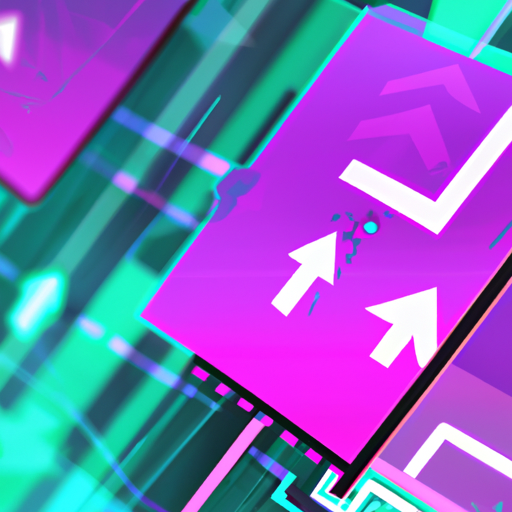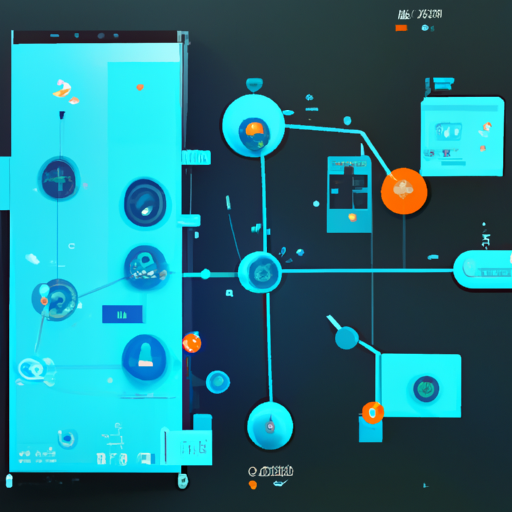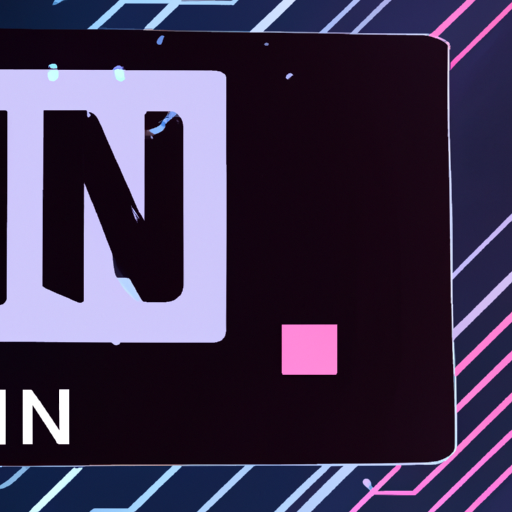-
Table of Contents
“Unraveling the Future of Technology with dApp Dynamics: Decentralized Apps Decoded.”
Introduction
dApp Dynamics: Decentralized Apps Decoded is a comprehensive guide that explores the world of decentralized applications (dApps). It provides an in-depth understanding of how these applications function without a central authority, their development process, and their potential impact on various industries. The guide also decodes complex concepts related to dApps, such as blockchain technology, smart contracts, and consensus mechanisms, making them accessible to both tech-savvy readers and beginners. It serves as a valuable resource for anyone interested in the future of decentralized technology and its applications.
Blockchain Base: Foundation of dApps
Decentralized applications, or dApps, are a revolutionary technology that is transforming the digital landscape. These applications operate on a peer-to-peer network, rather than a single server, making them immune to single points of failure and offering a level of transparency and security that is unparalleled in traditional applications. The foundation of these dApps is the blockchain, a decentralized ledger that records transactions across multiple computers so that the record cannot be altered retroactively.
Blockchain technology is the backbone of dApps, providing the infrastructure that allows these applications to run smoothly and securely. Unlike traditional applications, which are hosted on centralized servers, dApps are hosted on a network of computers, or nodes, that each hold a copy of the blockchain. This decentralization ensures that no single entity has control over the application, making it resistant to censorship and manipulation.
The Blockchain Base of dApps also provides a level of transparency that is unmatched in traditional applications. Each transaction made on a dApp is recorded on the blockchain, creating a permanent, immutable record that can be viewed by anyone. This transparency not only fosters trust among users, but also holds all parties accountable for their actions.
Moreover, the Blockchain Base of dApps offers a high level of security. The decentralized nature of the blockchain makes it incredibly difficult for hackers to compromise. To alter a single transaction, a hacker would need to alter every subsequent block on every copy of the blockchain, a feat that is virtually impossible given the computational power required. This security is further enhanced by the use of cryptographic algorithms, which ensure that transactions are secure and identities are protected.
In addition to these benefits, the Blockchain Base of dApps also enables the use of smart contracts. These are self-executing contracts with the terms of the agreement directly written into code. They automatically execute transactions when predetermined conditions are met, eliminating the need for a middleman and reducing the risk of fraud.
However, while the Blockchain Base of dApps offers numerous advantages, it also presents certain challenges. The decentralized nature of the blockchain means that transactions can take longer to process than in traditional applications. Additionally, the transparency of the blockchain can be a double-edged sword, as it can potentially expose sensitive information if not properly managed.
Despite these challenges, the potential of dApps is immense. They offer a new way of interacting with digital applications, one that is more transparent, secure, and democratic. As blockchain technology continues to evolve and mature, it is likely that we will see an increasing number of dApps being developed, each with its own unique features and benefits.
In conclusion, the Blockchain Base is the foundation of dApps, providing the infrastructure that allows these applications to operate in a decentralized, transparent, and secure manner. While there are challenges associated with this technology, the potential benefits far outweigh them, making dApps a promising development in the digital landscape. As we continue to explore and understand the dynamics of dApps, it is clear that they represent a significant step forward in our digital evolution.
Consensus Channels: Driving Trust in dApps
Decentralized applications, or dApps, are transforming the digital landscape by leveraging blockchain technology to create a decentralized network of users and providers. At the heart of this revolution are Consensus Channels, the mechanisms that drive trust and reliability in these applications. Understanding the role of Consensus Channels in dApps is crucial to appreciating the potential of this groundbreaking technology.
In traditional centralized applications, a single authority or server verifies and validates all transactions. This centralized model, while efficient, is vulnerable to attacks, manipulation, and single points of failure. In contrast, dApps distribute the responsibility of validation across multiple nodes in the network, creating a system that is more secure, transparent, and resilient. This distribution of responsibility is facilitated by Consensus Channels.
Consensus Channels are the protocols that ensure all nodes in a dApp network agree on the validity of transactions. They are the backbone of trust in dApps, ensuring that all transactions are transparent and verifiable. Without Consensus Channels, the decentralized nature of dApps would be a liability rather than an asset, as there would be no way to ensure the integrity of transactions.
There are several types of Consensus Channels, each with its strengths and weaknesses. Proof of Work (PoW) and Proof of Stake (PoS) are two of the most common. PoW, used by Bitcoin, requires nodes to solve complex mathematical problems to validate transactions. While this method is highly secure, it is also energy-intensive. PoS, on the other hand, requires nodes to show ownership of a certain number of tokens to participate in the validation process. This method is less energy-intensive but can lead to centralization if a few nodes accumulate a majority of the tokens.
Despite their differences, all Consensus Channels serve the same purpose: to ensure that all nodes in a dApp network agree on the validity of transactions. This agreement is crucial for maintaining trust in the network. If nodes disagree on the validity of a transaction, the network could split into separate factions, a phenomenon known as a fork. Consensus Channels prevent forks by ensuring that all nodes follow the same rules for validating transactions.
In addition to maintaining trust, Consensus Channels also play a crucial role in securing dApp networks. By distributing the responsibility of validation across multiple nodes, Consensus Channels make it extremely difficult for malicious actors to manipulate the network. To successfully attack a dApp network, a malicious actor would need to control a majority of the nodes, a feat that is practically impossible in large networks.
In conclusion, Consensus Channels are the driving force behind the trust and reliability of decentralized applications. They ensure that all transactions are transparent and verifiable, maintaining trust among users. They also secure the network by distributing the responsibility of validation, making it difficult for malicious actors to manipulate the network. As dApps continue to evolve and gain popularity, the role of Consensus Channels will only become more critical. Understanding these dynamics is key to appreciating the potential of dApps and the transformative power of blockchain technology.
Code Command: Smart Contracts at Core

Decentralized applications, or dApps, are transforming the digital landscape, offering a new level of transparency, security, and efficiency. At the heart of these revolutionary applications are smart contracts, the Code Command that governs the operations of dApps. Understanding the dynamics of dApps and the role of smart contracts is crucial to appreciate the potential of this technology.
Smart contracts are self-executing contracts with the terms of the agreement directly written into lines of code. They are stored on the blockchain, a decentralized public ledger that records all transactions across a network. The code controls the execution, and transactions are trackable and irreversible, providing a high level of security and trust.
The beauty of smart contracts lies in their autonomy. Once the conditions are set, they execute automatically without the need for a third party. This eliminates the risk of manipulation, reduces costs, and speeds up the process. For instance, in a dApp for a betting game, a smart contract could automatically transfer the winnings to the winner’s account once the game ends.
However, the power of smart contracts extends beyond simple transactions. They can also be used to create decentralized autonomous organizations (DAOs), where the rules of the organization are enforced through code. This allows for a level of transparency and fairness that is unprecedented in traditional organizations.
Moreover, smart contracts are not limited to a single blockchain. They can interact with other smart contracts, creating a network of contracts that can work together to perform complex tasks. This interoperability is a key feature of dApps, allowing them to leverage the strengths of different blockchains.
Despite their potential, smart contracts are not without their challenges. The code is immutable, meaning once it’s deployed, it can’t be changed. This makes it crucial to ensure the code is error-free before deployment. Additionally, while the transparency of smart contracts is a strength, it can also be a weakness. Sensitive data is visible to all participants in the network, raising privacy concerns.
Furthermore, the legal status of smart contracts is still unclear in many jurisdictions. While some countries have started to recognize smart contracts as legally binding, others have not. This creates uncertainty and could potentially hinder the adoption of dApps.
Nevertheless, the potential of smart contracts and dApps is undeniable. They offer a new way of conducting business, one that is transparent, efficient, and secure. As the technology matures and legal frameworks catch up, it’s likely that we’ll see an increasing number of industries adopting dApps.
In conclusion, smart contracts are the Code Command at the core of dApps. They automate transactions, enforce rules, and interact with other contracts, all while providing a high level of security and transparency. While challenges remain, the potential of this technology is vast. As we continue to decode the dynamics of dApps, it’s clear that smart contracts will play a pivotal role in the future of digital applications.
Token Trail: Asset Management and Exchange
Decentralized applications, or dApps, are transforming the digital landscape, offering a new paradigm for building software applications. One of the most significant areas where dApps are making a substantial impact is in asset management and exchange. This is a realm where blockchain technology, the backbone of dApps, is proving to be a game-changer.
In traditional asset management and exchange, intermediaries play a crucial role. Banks, brokers, and other financial institutions facilitate transactions, maintain records, and ensure compliance with regulations. However, this centralized system has its drawbacks. It can be slow, expensive, and vulnerable to fraud. Moreover, it often lacks transparency, which can lead to mistrust among participants.
Enter dApps. By leveraging blockchain technology, dApps can eliminate the need for intermediaries. They can enable peer-to-peer transactions, ensuring that assets are exchanged directly between parties without the need for a middleman. This can significantly reduce costs and increase transaction speed.
Moreover, because all transactions are recorded on a public ledger, dApps can offer unprecedented levels of transparency. Every transaction is visible to all participants, and once recorded, it cannot be altered or deleted. This can help to build trust among participants and reduce the risk of fraud.
But the benefits of dApps in asset management and exchange go beyond just speed, cost, and transparency. They also offer the potential for greater accessibility and inclusivity. Traditional asset management and exchange often require significant capital and access to financial institutions. This can exclude many people, particularly in developing countries.
dApps, on the other hand, can be accessed by anyone with an internet connection. They can enable micro-transactions, allowing people to buy and sell assets in small amounts. This can open up asset management and exchange to a much wider audience, democratizing access to financial services.
Furthermore, dApps can offer innovative new ways to manage and exchange assets. For example, they can enable the creation and exchange of tokenized assets. These are digital tokens that represent ownership of a physical or digital asset. They can be bought, sold, and traded on a blockchain, just like any other digital asset. This can enable the creation of new markets and investment opportunities.
Tokenized assets can also be used to create decentralized autonomous organizations, or DAOs. These are organizations that are run by smart contracts on a blockchain, rather than by a centralized authority. DAOs can enable participants to pool their resources and make collective decisions about how to manage and invest their assets. This can offer a new, more democratic way to manage and exchange assets.
In conclusion, dApps are revolutionizing asset management and exchange. They offer the potential for faster, cheaper, and more transparent transactions. They can democratize access to financial services, opening up new opportunities for people who have traditionally been excluded. And they can enable innovative new ways to manage and exchange assets, from tokenized assets to DAOs. As the dApp ecosystem continues to evolve, we can expect to see even more exciting developments in this space.
User Control: Data Sovereignty and Interaction
Decentralized applications, or dApps, are transforming the digital landscape by offering a new level of User Control and data sovereignty. These applications operate on blockchain technology, a decentralized network that ensures transparency, security, and immutability. Unlike traditional applications, dApps empower users with full control over their data, fostering a sense of data sovereignty that is reshaping the way we interact with digital platforms.
In the traditional digital ecosystem, user data is often controlled by centralized entities. These entities, such as social media platforms or e-commerce sites, collect, store, and often monetize user data without explicit consent. This model has raised significant privacy concerns, leading to a growing demand for more user-centric solutions. Enter dApps, which are designed to put control back into the hands of users.
At the heart of dApps is the principle of data sovereignty. This concept refers to the idea that individuals should have absolute control over their personal data. In the context of dApps, data sovereignty means that users have the power to decide what data they share, who they share it with, and how it is used. This is a stark contrast to the traditional model, where users often have little to no say in how their data is handled.
Data sovereignty in dApps is achieved through blockchain technology. Each user’s data is stored on a decentralized network, rather than on a central server. This means that no single entity has control over the data. Instead, control is distributed among all users of the network. Furthermore, blockchain’s inherent transparency ensures that any changes to the data are visible to all users, providing an additional layer of security and accountability.
But the benefits of dApps extend beyond data sovereignty. These applications also offer a new level of interaction for users. In traditional applications, interaction is often one-sided, with users passively consuming content or services. However, dApps encourage active participation. Users can contribute to the development and governance of the application, creating a more dynamic and engaging experience.
For instance, users of a decentralized social media platform can vote on updates or changes to the platform’s rules. Similarly, users of a decentralized marketplace can propose and vote on new features or policies. This level of interaction fosters a sense of community and ownership among users, further enhancing the appeal of dApps.
Moreover, dApps often incorporate token economies to incentivize user participation. Users can earn tokens for contributing to the platform, which can then be used within the dApp ecosystem or traded on cryptocurrency exchanges. This not only encourages active participation but also provides a tangible reward for users’ contributions.
In conclusion, dApps are revolutionizing the digital landscape by offering unprecedented User Control and data sovereignty. By leveraging blockchain technology, these applications ensure that users have full control over their data and offer a new level of interaction that fosters community and engagement. As the digital world continues to evolve, it is clear that dApps will play a pivotal role in shaping the future of digital interaction.
Future Facets: Evolving Landscape of dApps
Decentralized applications, or dApps, are rapidly transforming the digital landscape. These applications, which operate on blockchain technology, are not controlled by a single entity, but rather by a network of computers. This decentralization offers a host of benefits, including enhanced security, transparency, and resistance to censorship. As we look to the future, the evolving landscape of dApps promises to bring about significant changes in various sectors, from finance and healthcare to entertainment and education.
One of the most exciting facets of dApps is their potential to democratize the digital world. Unlike traditional applications, which are owned and controlled by corporations, dApps are governed by their users. This means that decisions about the app’s development and operation are made collectively, rather than being dictated by a single authority. This shift in power dynamics could lead to a more equitable digital ecosystem, where users have a say in the services they use.
Moreover, dApps are set to revolutionize the financial sector. Decentralized finance, or DeFi, applications are already disrupting traditional banking systems by providing decentralized lending and borrowing platforms, stablecoins, and prediction markets. These applications offer financial services to anyone with an internet connection, bypassing the need for intermediaries like banks. This could potentially democratize access to financial services, particularly in regions where traditional banking infrastructure is lacking.
In the healthcare sector, dApps could provide a secure and transparent platform for storing and sharing patient data. This could significantly improve the efficiency of healthcare delivery and enable better collaboration among healthcare providers. Furthermore, by giving patients control over their own data, dApps could enhance privacy and consent in healthcare data management.
The entertainment industry is another area where dApps could bring about significant changes. Decentralized streaming platforms could disrupt the dominance of centralized services like Netflix and Spotify, offering a more equitable distribution of revenues among content creators. Similarly, decentralized social media platforms could give users control over their data and offer a platform free from censorship and manipulation.
In the education sector, dApps could provide a platform for decentralized learning, where knowledge is shared and validated by the community. This could democratize access to education and foster a more collaborative and inclusive learning environment.
However, the future of dApps is not without challenges. Scalability, user experience, and regulatory issues are among the key hurdles that need to be overcome. Scalability is a particular concern, as current blockchain networks may not be able to handle the volume of transactions required by mass adoption of dApps. User experience is another challenge, as the technical complexity of blockchain technology can be a barrier for non-technical users. Regulatory issues also pose a challenge, as the decentralized nature of dApps raises questions about legal responsibility and compliance.
Despite these challenges, the potential of dApps is undeniable. As the technology matures and these issues are addressed, we can expect to see a growing adoption of dApps across various sectors. The future of dApps is a dynamic one, promising a decentralized and democratized digital ecosystem that empowers users and disrupts traditional power structures. As we navigate this evolving landscape, it is clear that dApps will play a pivotal role in shaping the future of the digital world.
Q&A
1. Question: What is a dApp?
Answer: A dApp, or decentralized application, is a software application that runs on a distributed computing system like a blockchain.
2. Question: How does a dApp work?
Answer: A dApp works by running on a blockchain network in a public, open-source, decentralized environment and is free from control and interference from any single authority.
3. Question: What are the advantages of dApps?
Answer: The advantages of dApps include increased security, transparency, resistance to censorship, and the potential for incentivizing user participation through tokens.
4. Question: What are some examples of dApps?
Answer: Examples of dApps include Ethereum, a platform for building decentralized applications, and CryptoKitties, a blockchain-based virtual game.
5. Question: How are dApps different from traditional apps?
Answer: Unlike traditional apps, dApps are not controlled by a single entity, they are open-source, and they use blockchain technology to record and validate transactions.
6. Question: What is the future of dApps?
Answer: The future of dApps is promising with potential applications in various sectors like finance, healthcare, and supply chain. They are expected to play a significant role in the decentralization of the internet and the economy.
Conclusion
dApp Dynamics: Decentralized Apps Decoded provides a comprehensive understanding of decentralized applications (dApps). These applications operate on blockchain technology, ensuring transparency, security, and independence from a central authority. They have the potential to revolutionize various sectors, including finance, healthcare, and supply chain, by offering solutions to issues like data breaches and third-party interference. However, challenges such as scalability and user adoption remain. Overall, dApps represent a significant shift in the digital landscape, promising a decentralized future.



